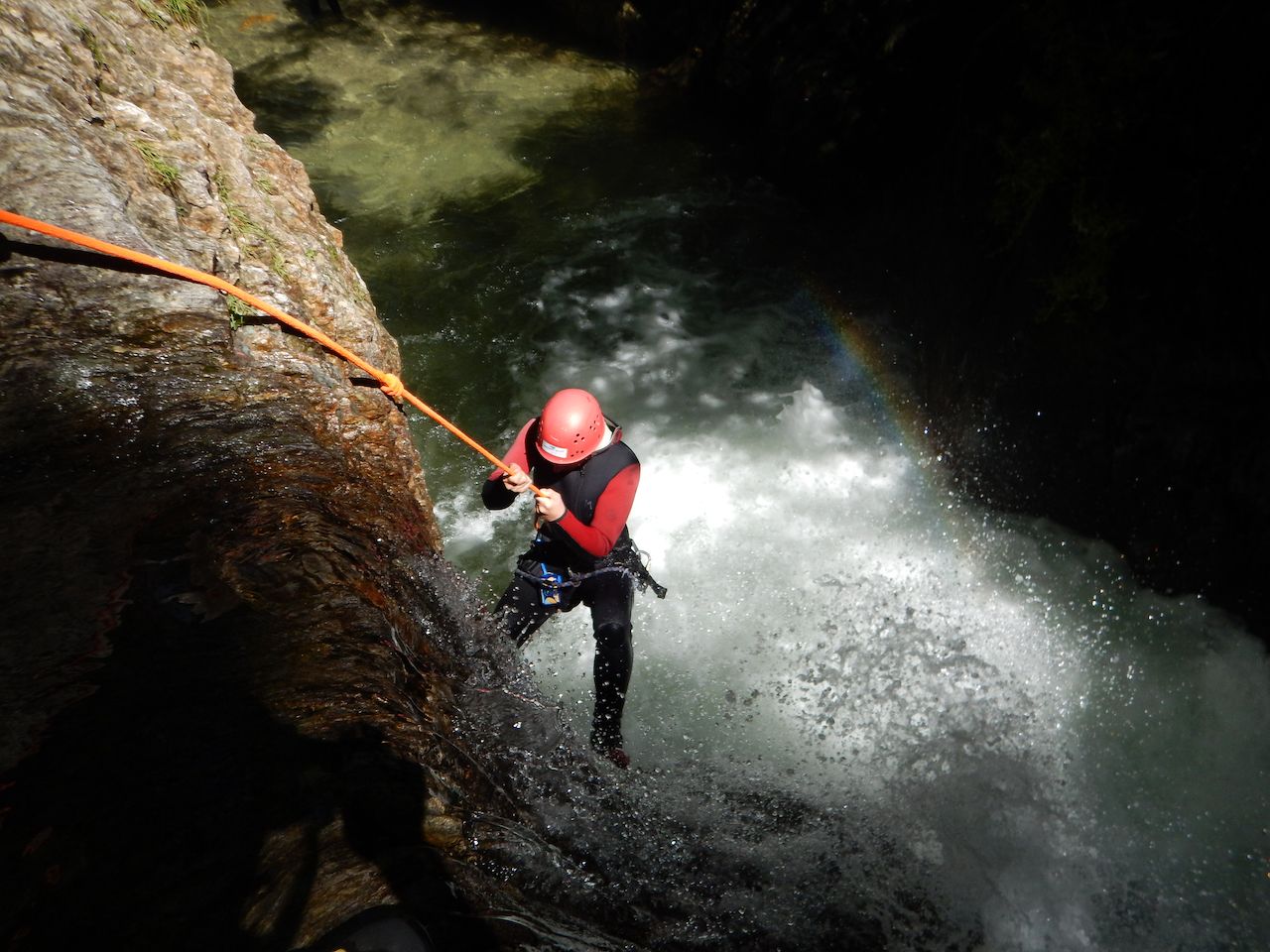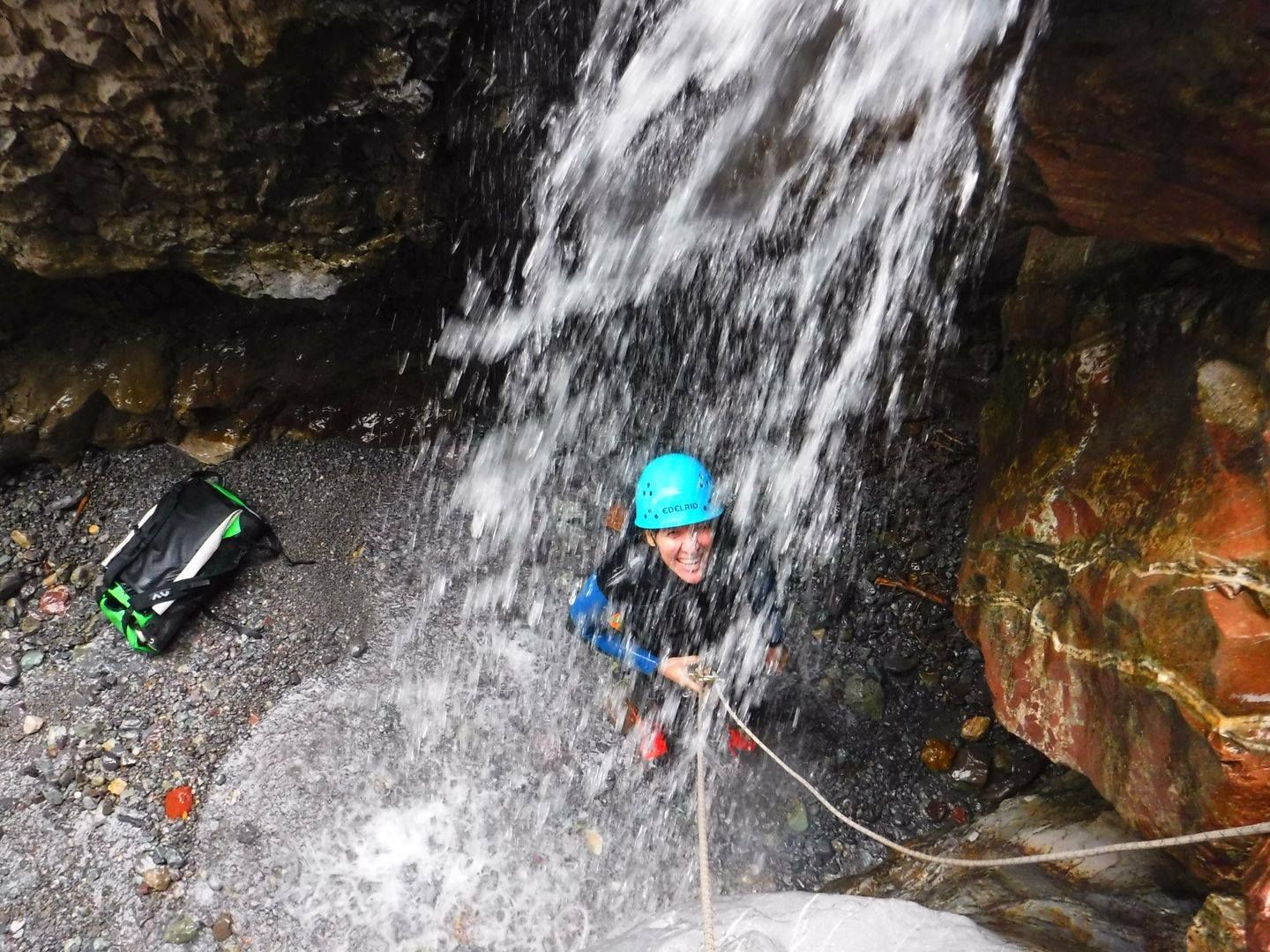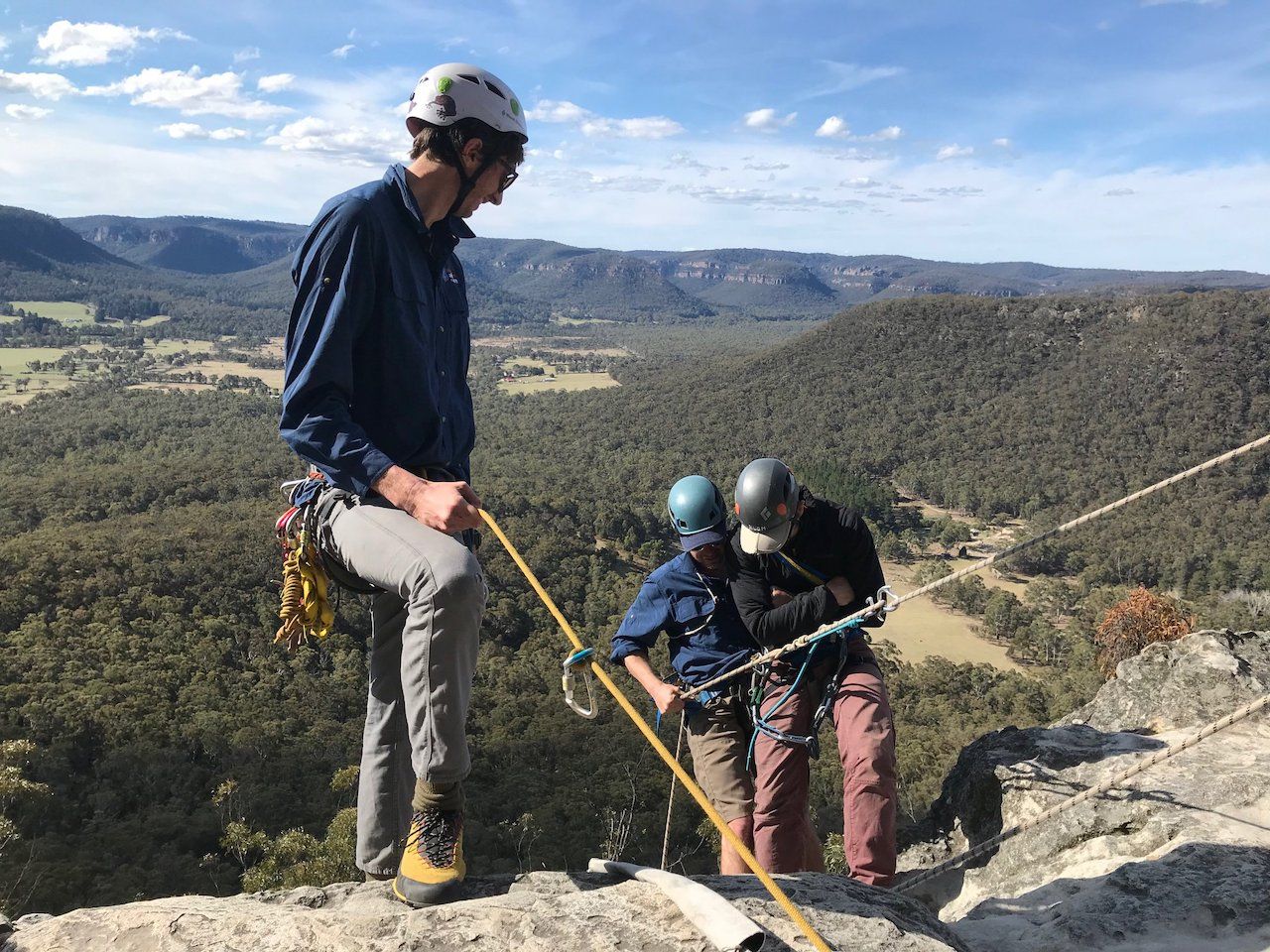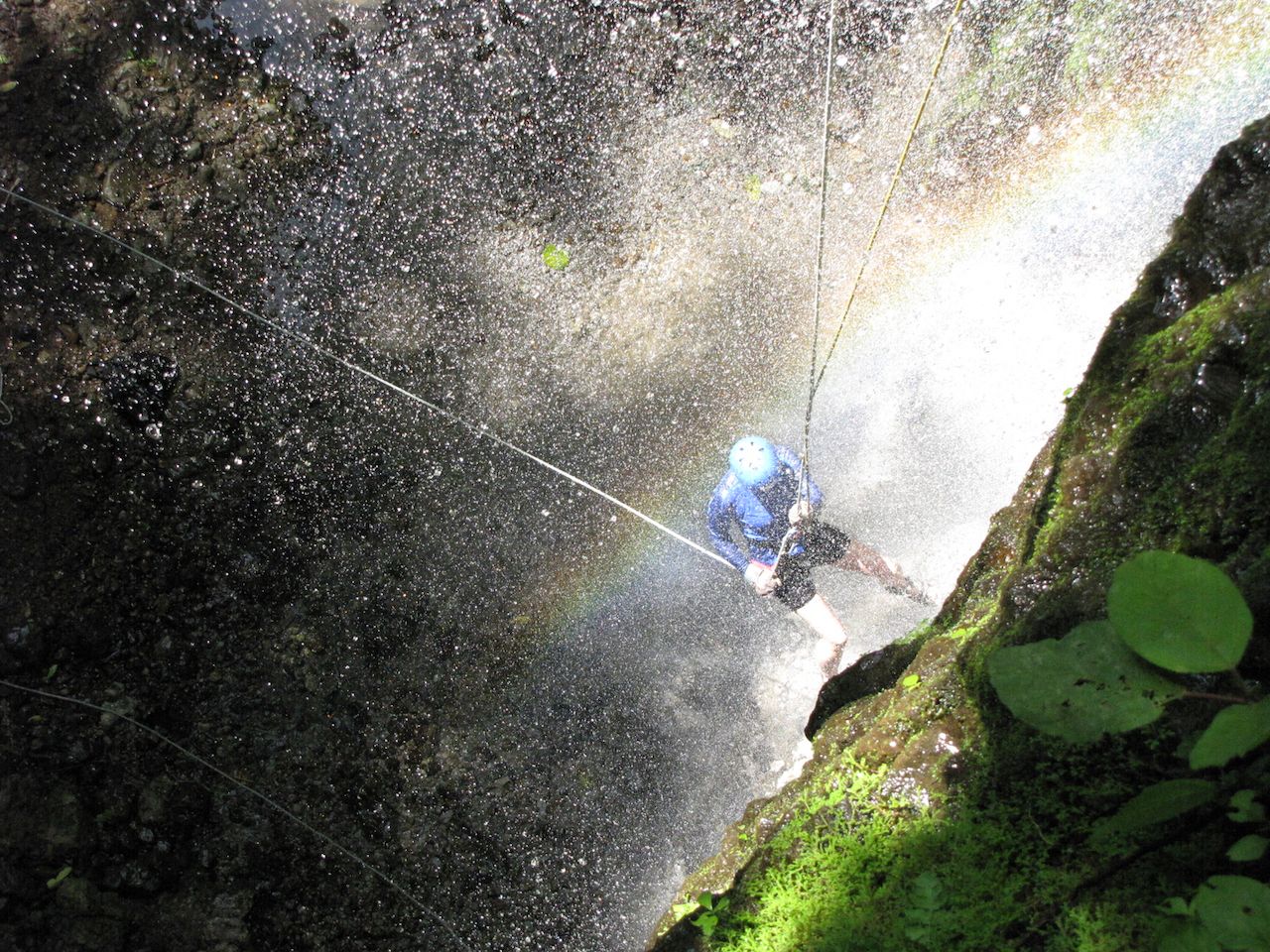The sun hangs high in the Colorado afternoon sky, beating down on you as you gaze over the cliff of a rock face toward the river below. The water is moving, but shallow. Your guide tosses a section of climbing rope over the edge to their partner down below, and setting nervousness to the side, you rappel down, pushing off the vertical face of rock as you work down toward the rock’s sandy base just beside the water. Once at the bottom, you pack up your climbing gear and move down the river, walking along and at some points even in the water, occasionally climbing over a set of boulders and jumping over a small waterfall into a wading pool below. There’s no set trail, but you’re not worried about that. Instead, your goal is to reach a makeshift campsite a couple of miles downstream before the sun sets.


Canyoning Is Your Next Outdoor Obsession. Here’s Where to Try It.
This isn’t an Indiana Jones film. It’s an increasingly popular sport called canyoning. While you may not have rappelled off of a towering rock face, if you’ve spent a lot of time in the mountains or have visited a hidden swimming hole, you’ve likely participated in at least some light canyoning. Here’s the lowdown on the sport and where you can take your canyon running skills to the next level.
What is canyoning?

Photo: Natalia Schuchardt/Shutterstock
Canyoning, also called canyoneering or gorge walking, involves navigating a canyon using a variety of techniques and skills. This adventure sport combines an array of disciplines including rappelling, scrambling, hiking, down-climbing, and in some cases, even cliff jumping and swimming. And while the terms are relatively the same, canyoning often implies traveling down the length of a narrow gorge while walking along a water source. Often, this water source has etched out the canyon over thousands and perhaps millions of years to create a terrain feature that to the naked eye often seems inaccessible.
However, with the proper equipment and skillset, these once off-limits areas are now providing a unique playground where the landscape can change depending on how high or low the water level is on any given day. On that note, canyoning is often weather dependent, as rain can cause flash floods in narrow canyons. But as long as conditions are safe, the sport is a unique way to access backcountry terrain and get off crowded trails.
It’s always best to enlist assistance from a guided service as it can provide the appropriate gear and instruction for a safe and enjoyable experience. For those looking to take their skills to the next level, some outfitters offer professional and recreational certification, certified by the International Canyoning Organization for Professionals (ICOpro).
The gear to get you down (and out)

Photo: Paulo Resende/Shutterstock
The sport involves a lot of the same gear as rock climbing. The major exception potentially entails spending a lot of time immersed in or in close proximity to water. And while the water may feel refreshing on a hot summer day, in certain environments — think cold, snowy runoff in the mountains — it can lead to a miserable experience without the proper gear. Regardless of the outfitter, the basic equipment for participants will include a harness and a helmet. All other safety gear, including ropes, carabiners, and rappel device, will also be provided and utilized under supervision.
Some outfitters will provide a wetsuit, neoprene socks, specially designed shoes for the watery and potentially slick environment, and possibly gloves depending on the season. Tropical environments will likely involve less technical apparel due to warmer water temperatures.
Where to go
Geographically speaking, any place that has a canyon or gorge can potentially support the sport. There are numerous iconic spots across the globe where canyoning tours are offered and companies provide professional instruction for a safe experience. Here are three such locations to go canyoning, chosen for their top-rated outfitters and the diversity of terrain that makes the sport approachable even to those who haven’t done it before. Plan to pay between $100 and $200 for a one-day tour, depending on where you are in the world and how the US dollar compares with the local currency. For example, canyoning in Costa Rica is generally cheaper than canyoning in Australia.
1. Ouray, Colorado

Photo: Canyoning Colorado/Facebook
Ouray, the “Switzerland of America,” may very well be the ultimate outdoor enthusiast’s paradise. Nestled in the heart of the San Juan Mountains and located at nearly 8,000 feet, this once-bustling mining town is now a haven for tourists and thrill-seekers. The area boasts some of the best ice climbing in the world and is home to the annual Ouray Ice Festival. Each year in January, thousands of climbers and spectators from around the globe descend on this tiny hamlet for the festival. And regardless of the season, the town’s famous hot springs are the perfect way to relax after a busy day of climbing or hiking.
Canyoning in this idyllic landscape provides the ultimate summer adventure. Beginner routes, Portland Creek and Angel Creek, don’t require any prior experience while intermediate and advanced tours are more technical and some experience is required. All instructors at Canyoning Colorado are ICOpro certified.
2. Blue Mountains, Australia

Photo: Blue Mountains Adventure Company/Facebook
In addition to its unique wildlife and often otherworldly landscapes, Australia is also home to some amazing canyoning. And while most canyoning opportunities are coming to a close in the Northern Hemisphere, tours are just getting started down under. As with most destinations, tours vary in difficulty so it’s best to choose a tour that meets your skill level and desire. Blue Mountains Adventure Company is a top-rated outfitter in the area and is accustomed to working with visitors from across the globe. High and Wild is another respected outfitter in the region.
3. Arenal Volcano, Costa Rica

Photo: Pure Trek
What can top the idea of canyoning in the shadow of a volcano? This tropical paradise is chock-full of possibilities for canyoning. Rappelling down multiple waterfalls in the heart of a jungle environment is just the beginning of the adventures to be had in this rugged, yet beautiful terrain. Check out Monte Verde Tours or Pure Trek for guided excursions to the volcano.